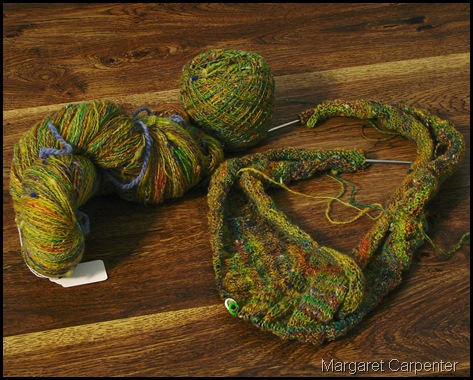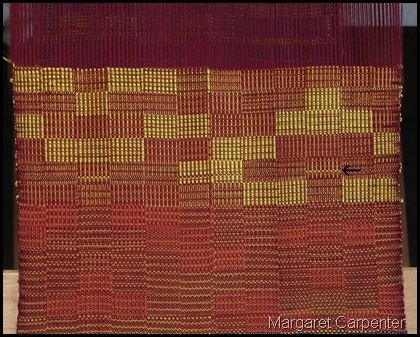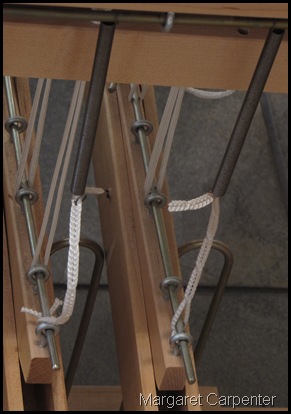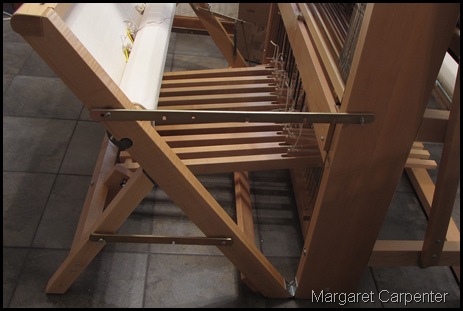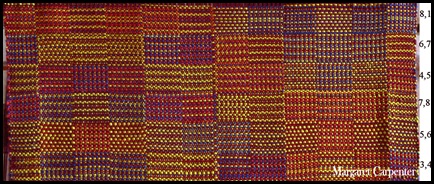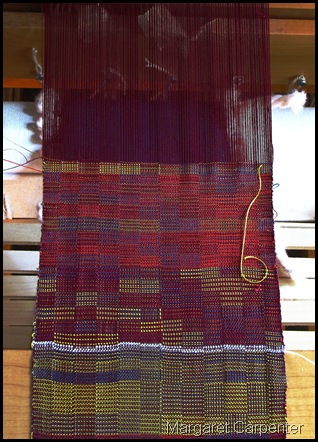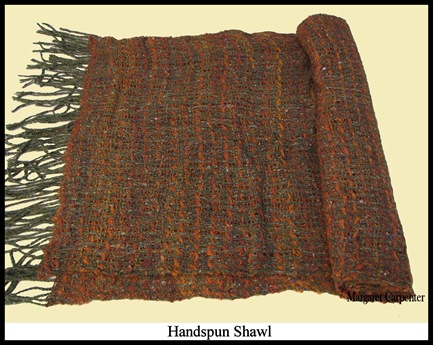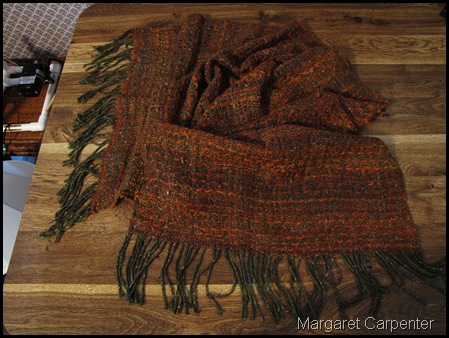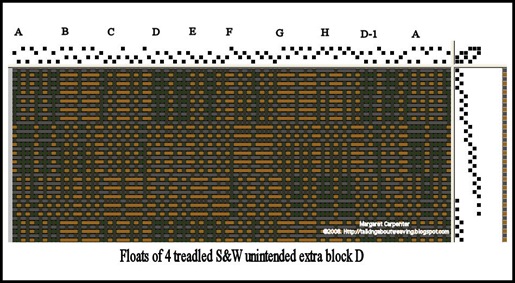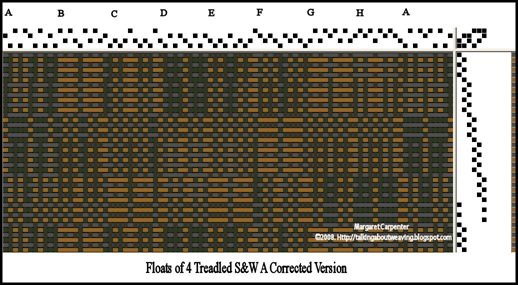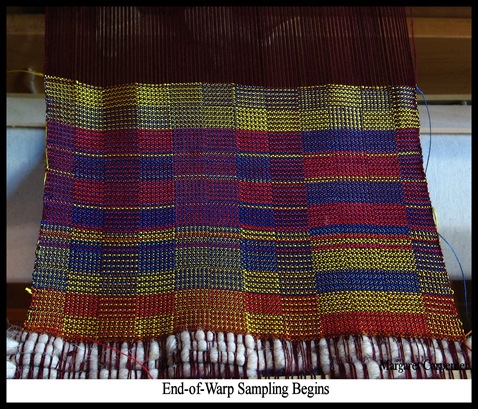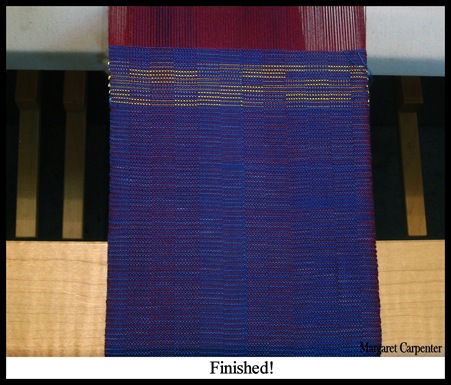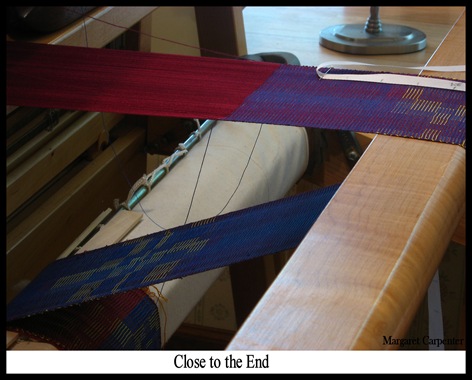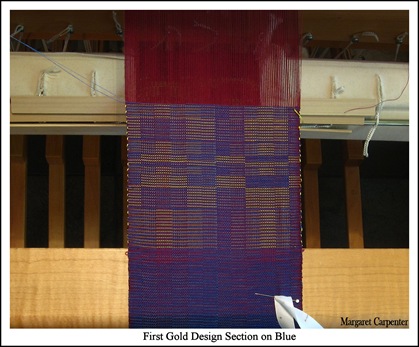Here are some drawdowns for treadlings.

I have kept the images small in order to give a better feel of what the fabric might look like woven.
INTRODUCTION
I have taken the threading drawdown I designed earlier for getting 4-thread floats instead of 3-thread floats. The basic threading I worked with was a threading that allows me to get 8 blocks on 4 shafts.
The warp is all one color, blue. The block on the very left, however, has green warps. This is the same block as the block on the far right. It is there to test the join between first and last block. It is green so that I don’t forget that this block is a repeat.
Using that drawdown, I tried some treadling variations I am particularly fond of. Well, the first one I am not particularly fond of, but I use it because it shows the block structure so clearly.
THE TREADLING VARIATIONS
Treadling #1 is overshot- style treadling. I have used red throughout. *Tabby is required but not indicated in the draft.
Treadling #2 is treadling on opposites. In each block I have used green for the first weft color, and rose pink for the second. I repeated the sequence twice. In the repeat, it is the rose that appears as the first weft color and green for the second. The result is the appearance of more blocks than there actually are. Theoretically this should not require *tabby, but I’m not sure.
Note: there are no such things as genuine opposites on this threading, despite the fact that the tie-up makes it look like there is. One result of this is that there are no genuine tabbies.
Treadling #3 is a kind of pseudo summer&winter treadling. For one block I alternate treadles 1 and 2, then I move on to alternate treadles 2and 3 and so forth. As in #2, I have alternated green and red weft threads. Like #1, the long blue warp floats clearly visible in the draft mean that weaving this requires *tabby.
Treadling #4 is polychrome treadling---i.e., treadling the six treadles and repeating. I used green for the one treadle in a given group and red for the others. Tabby is not required.
MY PERSONAL FAVORITE
My favorite of these, at least on paper, is #3. I had not realized how much interplay of weft and warp there is in this treadling. The interplay is there in my current weaving, but it is not nearly as vibrant and demanding in its attention. The idea of weaving *tabby does not, however, please me, for I would be adding yet another shuttle into the mix, and I would probably use 120/2 silk to make it as little obvious as possible.
On the other hand, I really like what I did here. That is the same treadling as #4. The same treadling as my current piece. Hard to believe! It was just a different way I used the colors as I treadled.
3 FLOATS VERSUS 4 FLOATS
Extending the weft pattern floats from 3 to 4 seems to have no impact on the drawdown. Had I done this with the 3-float drafts I have been using, I am sure no one would have noticed any real difference. This leaves two questions in my mind:
1. Why bother with this?
2. Why not jump to 5- or even 10-float drafts to see what happens?
A NOTE ON TABBY
In this structure there is no true tabby (unlike ordinary 4-shaft crackle). So one has to think in terms of binder threads and get creative. Zielinski is of enormous help here in suggesting some possible solutions.
A NOTE ON THE IMAGES
Those of you who have clicked on the above images to see them larger will have learned that there are not four images but only one. What I did was to copy and paste these images into a page of my E-sketchbook (kept in Microsoft Publisher) and once pasted, to arrange them as I wanted them. Then I locked them into position. I then copied the locked group and pasted it into this blog post. On my E-sketchbook page I can unlock the group any time I want. I assume that any of the publishing programs would allow you to do this.
Related Posts:
Crackle with Floats of Four (or More)
Summer and Winter and…….Crackle (of course)
Crackle Treadled as Overshot
“Treadling with Floats of 4: 8 Crackle Blocks on 4 Shafts” was written by Margaret Carpenter for Talking about Weaving and was originally posted on July 1, 2009. ©2009 Margaret Carpenter aka Peg in South Carolina.
